
|
The first persistent Web agent that we have created on Actor Prolog is a program that collects information about research groups that develop Prolog and projects in the field of logic programming. The agent looks through a given list of Web sites and calculates some attributes of the sites: the date of recent modification, total size, the number of figures, the number of outside links, the number of error links, the number of given keywords, etc. Usually it takes some days or a week to investigate all the sites in the list. Sometimes I have to save the state of the agent in the evening when I go home and restore it in the morning. Collected data have visualized by the means of VRML and published on our Web Site http://www.cplire.ru/Lab144/space/prolog.html In this section we will consider general structure of the Site and some examples of 3D representation of the data. |
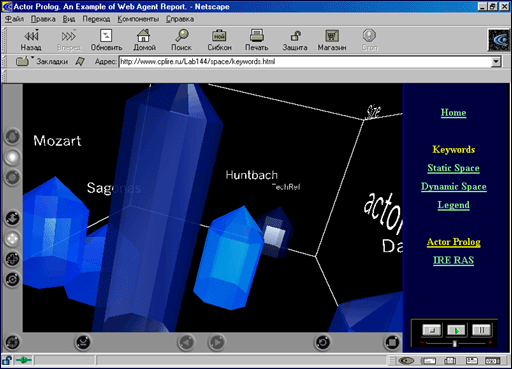
Fig. 1. 3D representation of data in Internet.
|
Your Web browser should support VRML. In the case if it does not support VRML, please install free VRML plug-in http://www.parallelgraphics.com. |
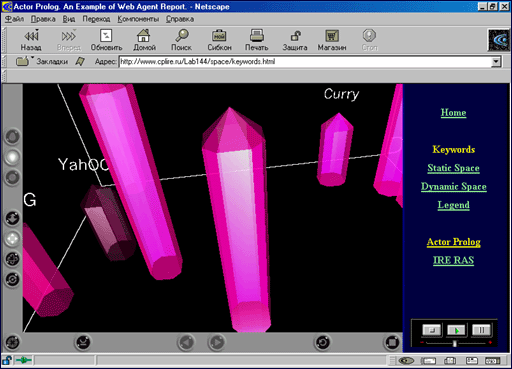
Fig. 2. Navigation in 3D cyberspace.
|
User interface of the Site contains a 3D scene and a control panel. |
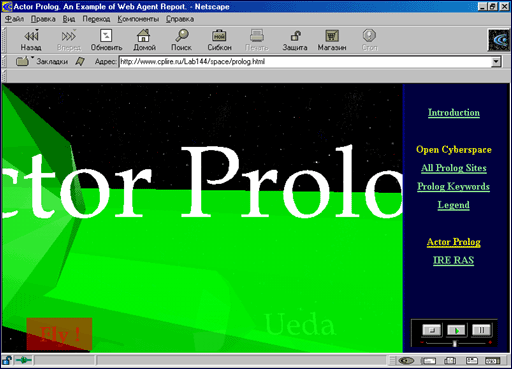
Fig. 3. User interface of the Site.
|
The "Fly!" red button in the front of 3D scene serves for control of the visualization mode. One can suspend the fly through the 3D space by placing the mouse on the "Fly!" button and then getting it out of the button. |
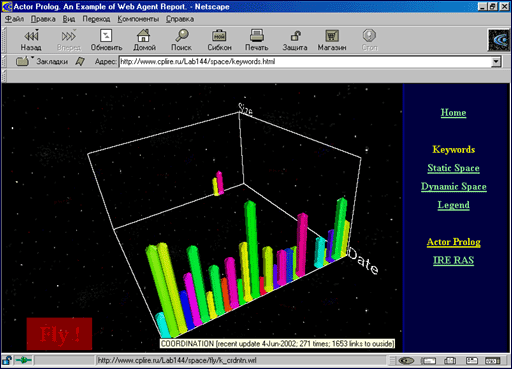
Fig. 4. The fly is suspended.
|
Then one can manually rotate the scene in any direction using the mouse. When the cursor touches an object of 3D scene, the browser automatically shows the name and some attributes of the object. The meanings of the coordinates of 3D scene are the following:
Place the cursor on the "Fly!" button to continue the fly through the 3D world. |
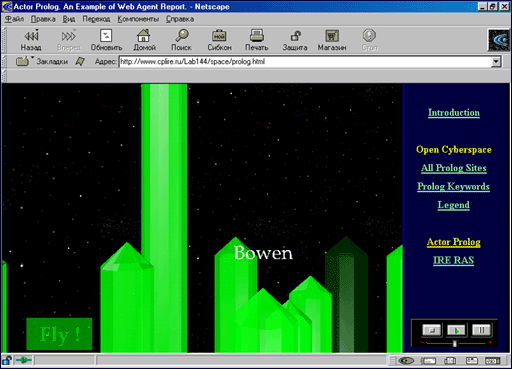
Fig. 5. Continuation of the fly.
|
Our 3D Site consists of two main sections:
The first section gives general information about Web sites related to the logic programming. One can compare given attributes of the sites. It is easy to see for the visitor what sites are not supported for a long time and what sites growth very rapidly. |
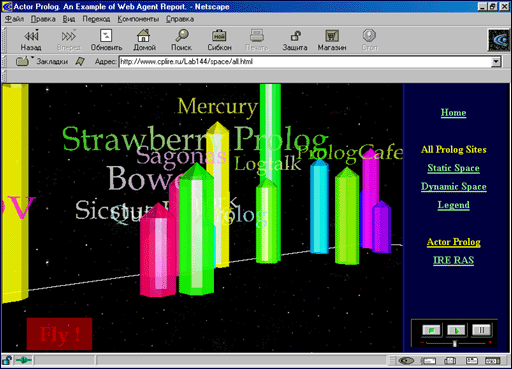
Fig. 6. All the sites in one 3D scene.
|
The "Static Space" and "Dynamic Space" buttons on the control panel have the following meanings:
Let us switch on the "Static Space" mode and fly through these nice crystals now! |
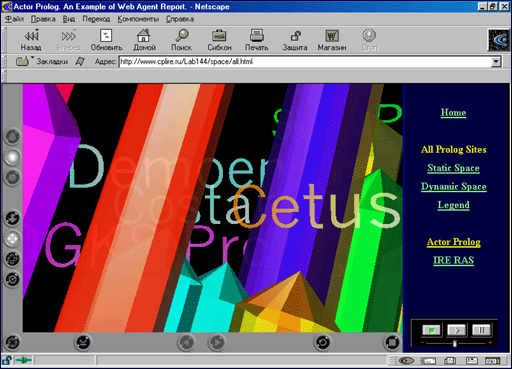
Fig. 7. Navigation in the static 3D world.
|
Let us come back to the root menu now. Please press the "Home" button. Now enter the "Prolog Keywords | Static Space" section. |
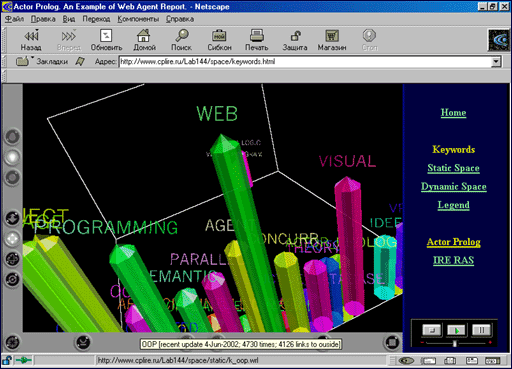
Fig. 8. Selecting a keyword.
|
Press the "Web agent" crystal to enter 3D space containing all Web sites that use the "Web agent" keyword. |
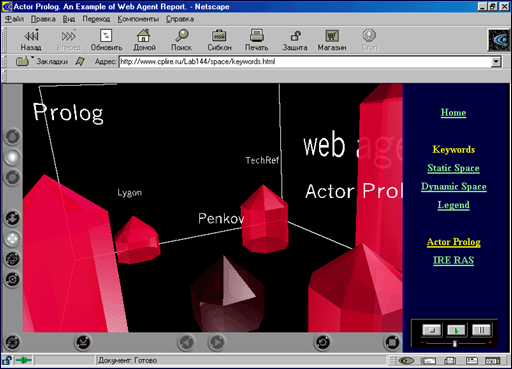
Fig. 9. The section "Web agent".
|
Now you can move and examine 3D space from various points of view. |
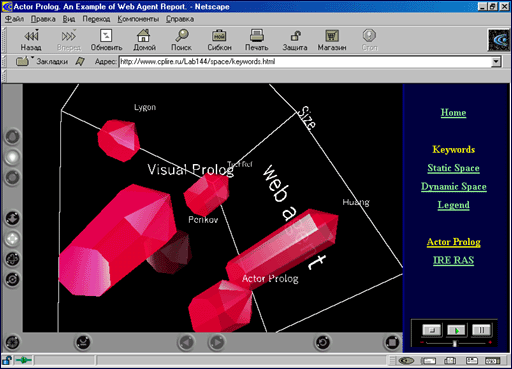
Fig. 10. Investigation of 3D cyberspace.
|
3D scenes corresponding to different keywords use different colors. As stated above, in the one-color words the brightness of Web resource denotes the quantity of hyperlinks to the outside resources. |
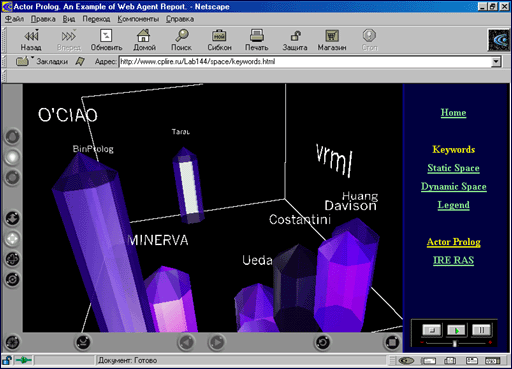
Fig. 11. The "VRML" section.
|
Let us select another keyword, for instance, "OOP". |
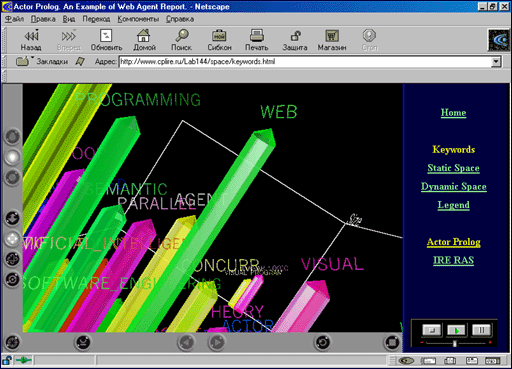
Fig. 12. Selecting a keyword.
|
The space corresponding to the keyword contains a lot of Web resources because selected keyword is used on the most logic programming sites now. |
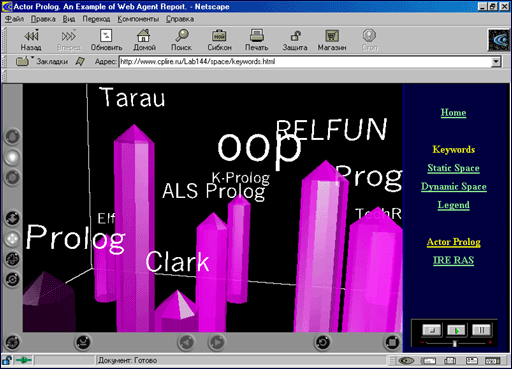
Fig. 13. The "OOP" section.
|
Let us investigate other 3D scenes. |
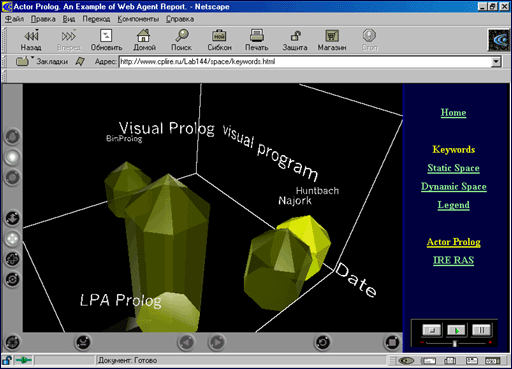
Fig. 14. An example of 3D cyberspace.
|
|
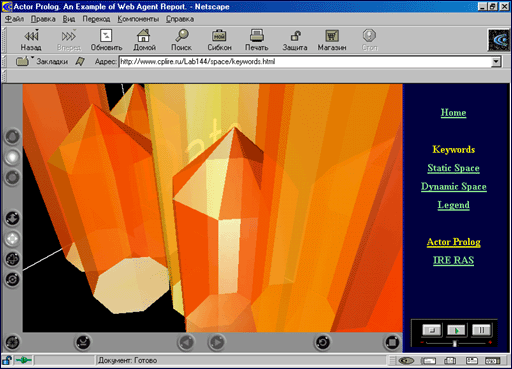
Fig. 15. An example of 3D cyberspace.
|
|
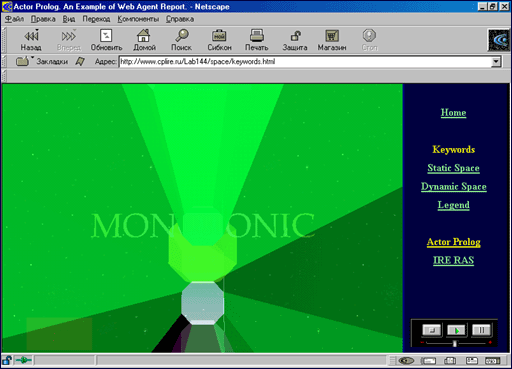
Fig. 16. A fly through the space of keywords.
|
All the information published on the 3D Site is collected by the agent ScanWeb.A that is situated in the Web\ScanWeb directory. You can freely modify source text of the agent and accommodate this Actor Prolog program for collection and visualization of the information that you need. |
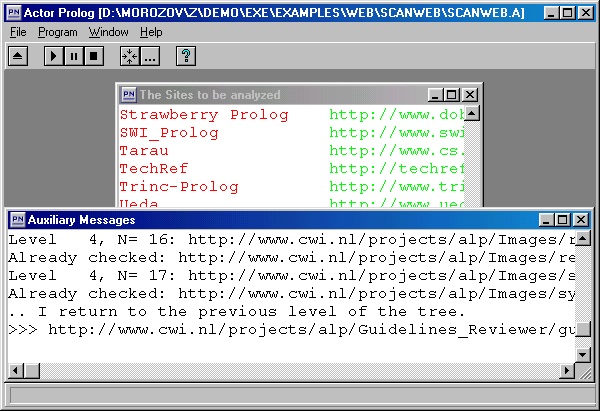
Fig. 17. The agent collects information on the Web.
|
Actor Prolog makes possible fast and easy creation of specialized Web agents collecting and processing information. Thus Actor Prolog makes profitable a commercial development of specialized Web agents. |

|
Table of content |

|